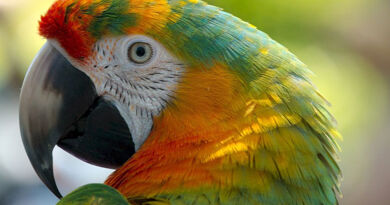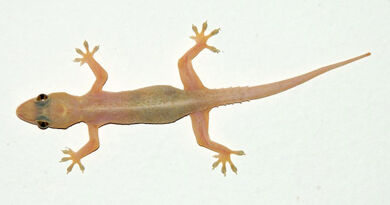The Anolis
Variable in size, from a few centimeters to 20 cm long and even more, including the tail, the Anolis are typically arboreal. It is in the trees that we can see them move with extraordinary speed. Possessing the ability to change color when they are “excited”. They are mostly diurnal and oviparous, deposit their eggs anywhere, even in a flowerpot or drawer, etc. Thanks to their legs with foot pads and claws on each finger, they can climb on apparently smooth surfaces, walls for example. Unlike the Iguanas which are herbivores, the Anolis have adapted to the insectivorous diet. We can see them on the lookout, motionless, merging with their support, because they take the same shade, watching a fly for example, and then, rushing with extreme vivacity on their victim. Thanks to their strong jaw and sticky tongue, they instantly grab their prey. Guadeloupe and Martinique have a number of species that have a common origin.
A common origin, the Americas! The history of the introduction of these reptiles remains very hypothetical. According to some authors, their introduction was an accident. The way they lay their eggs anywhere, in a flowerpot, or a drawer, to name a few, made their introduction easier at a time when relations with the Americas were very frequent. . Given the diversity of the Anolis species in our islands, other authors believe, on the other hand, that their arrival in Guadeloupe and Martinique most probably dates from the Tertiary (40 million years), while the species was still in full evolution. It would have come from the North or South American continent and also from the Greater Antilles, transported on driftwood.
The Anolis of Martinique Strong jaw, presence under the male’s throat of a baleen called “majole” in Creole, which he straightens when he is excited. Coming from the South, he would have colonized all the islands: Grenada, Grenadines, Barbados, Saint-Vincent, Saint-Lucie and Martinique. His arrival on our islands remains hypothetical. This is how we can read in “Other Aspects of Nature in the Antilles”, published in 1971: “Anolis is certainly one of the first pioneers of our lands when they were still virgin. Its resistance to long journeys facilitated its establishment; this must have happened from the tertiary while the species were in full evolution and thus explains the diversity of forms in the islands and even in each of them. “
Importance of Anolis Although their enemies are quite numerous: cats, birds such as our blackbirds and even humans, the Anolis have not entirely disappeared from our islands, they have even sometimes proliferated. This thanks to their arboreal manners, and their great agility which allow them to often escape from their main enemies. In addition, the females hide their eggs well, which are laid in pairs in the humus of loose soil and in humid places, therefore out of reach of predators.




